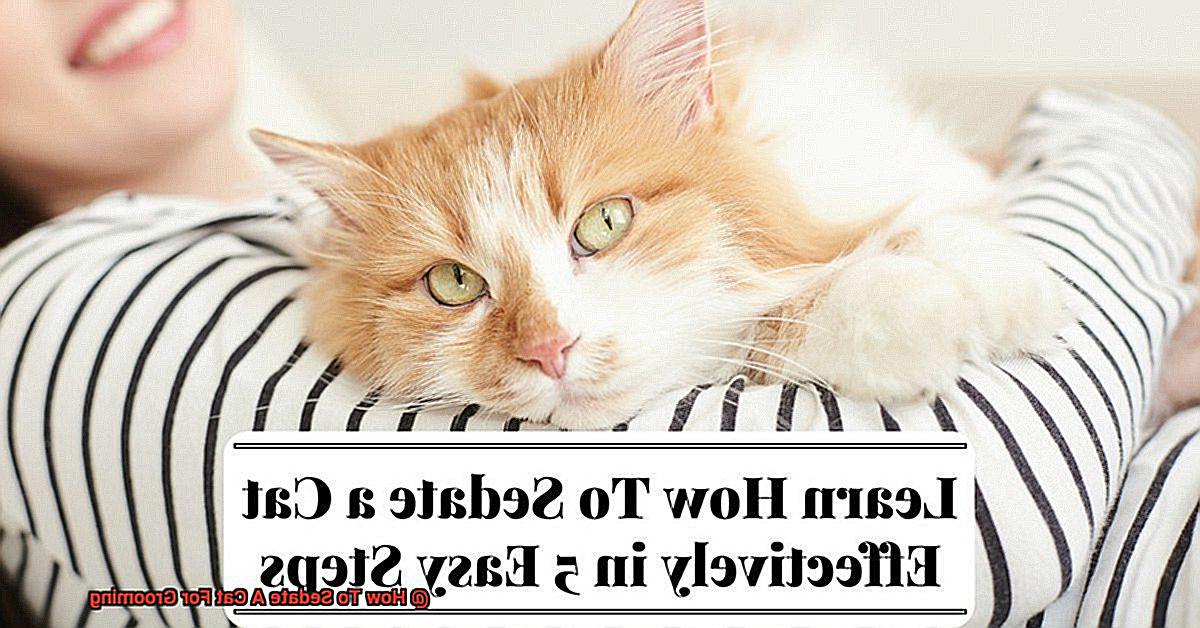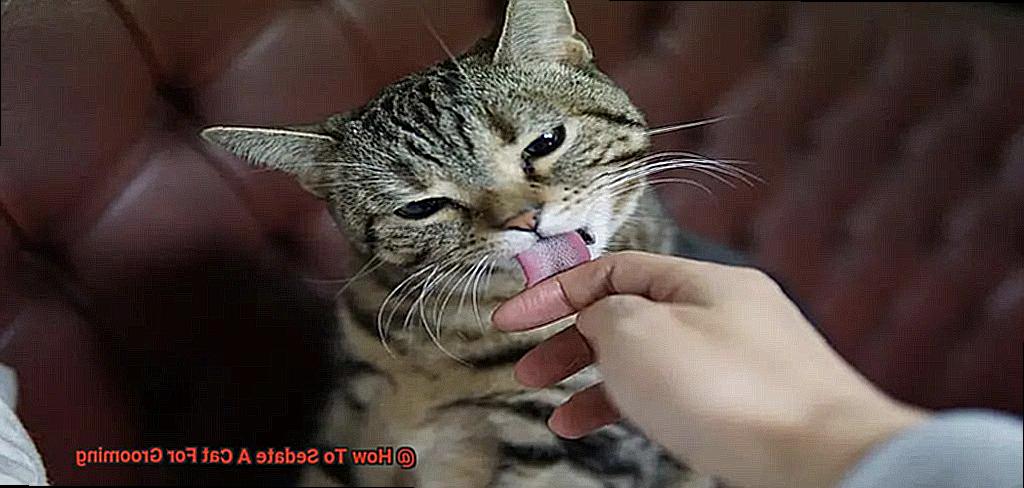Do you have a cat that needs to be groomed, but is too ill or aggressive to handle? Don’t worry.
There are safe and effective ways to sedate your cat for grooming. In this blog post, we’ll explore the various methods of sedating a cat for grooming – from over-the-counter medications to prescription medications, and even natural remedies.
We’ll also discuss the risks associated with each technique so you can make an informed decision on how to sedate your pet safely.
Finally, we’ll provide tips on how to make the whole process as stress-free as possible for both you and your feline friend.
So if you’re looking for advice on how to sedate your cat for grooming, read on!
Benefits of Sedating a Cat for Grooming
Sedation can provide a safe and effective solution for both of you.
Sedating a cat for grooming helps the groomer handle the cat safely, while also keeping them calm. This is especially beneficial if your cat is particularly anxious or difficult to handle. In addition, sedation reduces stress and anxiety during grooming, resulting in improved behavior when being handled.
Sedation also helps reduce any potential pain or discomfort that may be caused by the grooming process. Furthermore, it ensures that the process is done safely and correctly, as it allows for more precise handling of the cat.

Overall, sedating your cat for grooming is an excellent way to ensure that both you and your furry friend are comfortable with the process.
Types of Sedation Available
Cats can be a handful, but there are ways to help them relax and stay calm. Sedation is one way that can be used to help cats relax and feel more at ease. There are three main types of sedation available for cats: chemical, herbal, and natural.
Chemical sedation is the most common form of sedation used for cats. It involves administering a sedative or tranquilizer to the cat, usually done by a veterinarian. This can be done orally, intramuscularly, or intravenously.
Herbal sedation is another option for cats that uses natural herbs such as chamomile, lavender, valerian root, passionflower, and kava kava to soothe the cat. This method is usually done at home and can be administered orally or topically.
Natural sedation is a less invasive option that uses natural methods such as massage, calming music, pheromone sprays/diffusers, and Feliway diffusers to relax the cat. These techniques are usually done at home without involving any medications or drugs.

No matter which type of sedation you choose for your cat, it’s important to consult your veterinarian first so they can advise you on which option would be best for your pet’s individual needs.
When Should You Not Sedate Your Cat?
Sedating your cat for grooming can be a great way to keep them calm and reduce their anxiety. However, it’s important to know when sedation is not safe for your feline friend.
First, cats with any underlying medical conditions such as heart or respiratory issues, or those that are pregnant should not be sedated. Additionally, cats under the age of 8 weeks old should not be sedated as their bodies are still developing and may be more sensitive to the effects of anesthesia.
It’s also essential to remember that sedation should only be used as a last resort. If your cat can easily be soothed with other methods such as petting, then there may be no need to use sedation at all.
Finally, it is important to speak with your veterinarian before attempting to sedate your cat for grooming. They will be able to provide advice on how best to do so safely and effectively.
Preparing Your Cat For Grooming
Grooming your cat can be a daunting task, especially if they don’t enjoy it. Fortunately, there are ways to groom your cat without the use of sedatives.
First, you should get your cat used to the grooming tools. Introduce them to brushes and combs, allowing them to sniff and explore them. This will help them become more familiar with the process.
When grooming your cat, remember to reward them with treats or verbal praise for positive reinforcement. This will make the experience more enjoyable for both of you.
Creating a comfortable environment is also key when it comes to grooming your cat. Use a soft surface such as a towel or blanket and make sure the room is warm and quiet. To further relax your cat during the process, try using calming sprays or diffusers with lavender or chamomile essential oils.
Finally, always use slow and gentle strokes when brushing or combing your cat’s fur. Doing so will help reduce their stress and make future grooming sessions easier for both of you.
How to Sedate a Cat with Benadryl
Sedating cats can be an important part of grooming and medical procedures, but it’s important to do it safely. Benadryl is a commonly used sedative for cats, but it should only be used under the direction of a veterinarian. Here are step-by-step instructions on how to safely use Benadryl as a cat sedative.
Determining the Proper Dosage
The correct dosage of Benadryl for cats depends on their weight and age. The recommended dosage for adult cats is 1mg per pound of body weight, while kittens’ dosage should be lower and not exceed 2mg per pound of body mass. Since this can be dangerous for cats, it is important to never give more than the recommended dose.
Administering the Medication
Benadryl can be administered orally or intravenously depending on the situation. When administering orally, it is important to mix the medication with a small amount of food or water to ensure that the cat swallows it properly.
If administering intravenously, it is important to make sure that the needle is sterile and that the cat does not move during the procedure in order to avoid any complications.
Giving Benadryl To Cats
To administer Benadryl orally, mix the prescribed amount of liquid Benadryl with a small amount of wet food or tuna juice and feed it to your cat.
If your cat does not like the food, you can try giving them the Benadryl in pill form by crushing it and mixing it with wet food or tuna juice.
Monitoring Your Cat’s Reaction
After administering Benadryl, monitor your cat closely and make sure they are not having any adverse reactions such as difficulty breathing or excessive lethargy. If you’ve found that they’re safe and sedated properly, you can proceed with grooming your cat carefully and gently.
Natural Ways To Sedate A Cat For Grooming
Cats are beloved family members, and it’s essential to keep them clean and content.
But grooming cats can be a real challenge. That’s why it’s so important to sedate cats with natural remedies and techniques before grooming sessions.
Drugs or chemicals should never be used, as they can be dangerous for cats.
Fortunately, there are some natural ways to calm cats before grooming.
For instance, create a peaceful and secure environment for your cat. Play calming music, offer treats or toys to distract them from the grooming process.
These techniques will help relax the cat before grooming, making the entire experience more pleasant for both you and your pet.
When using these methods, focus on providing your cat with a positive experience. Reward them with lots of praise when they do well during the session, and make sure to give them plenty of breaks so they don’t become overwhelmed or stressed out.
Also Read: Do Maine Coons Need To Be Groomed?
Conclusion
To sum up, sedating a cat for grooming is an effective way to make the process stress-free for both you and your pet.
There are various forms of sedation available including chemical, herbal and natural alternatives. However, it’s important to know when it is not safe to sedate your cat and that you should always consult a doctor before attempting to do so.
Additionally, there are natural ways to soothe cats before grooming sessions without drugs or chemicals. With the proper procedures in place, you can be sure that everyone involved has a pleasant experience.







